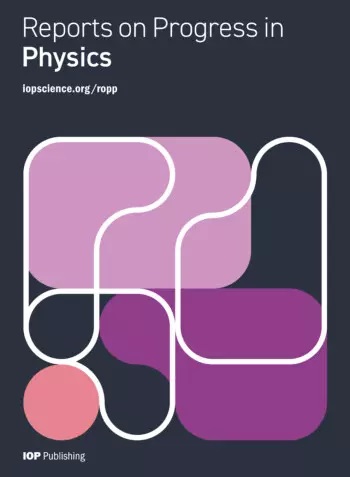Enhanced ferromagnetism in monolayer Cr2Te3 via topological insulator coupling
IF 20.7
1区 物理与天体物理
Q1 PHYSICS, MULTIDISCIPLINARY
引用次数: 0
Abstract
Exchange-coupled interfaces are pivotal in exploiting two-dimensional (2D) ferromagnetism. Due to the extraordinary correlations among charge, spin, orbital and lattice degrees of freedom, layered magnetic transition metal chalcogenides (TMCs) bode well for exotic topological phenomena. Here we report the realization of wafer-scale Cr2Te3 down to monolayer (ML) on insulating SrTiO3(111) and/or Al2O3(001) substrates using molecular beam epitaxy. Robust ferromagnetism persists in the 2D limit. In particular, the Curie temperature TC of 2 ML Cr2Te3 increases from 100 K to ∼120 K when proximitized to topological insulator (TI) (Bi,Sb)2Te3, with substantially boosted magnetization as observed via polarized neutron reflectometry. Our experiments and theory strongly indicate that the Bloembergen–Rowland interaction is likely universal underlying TC enhancement in TI-coupled magnetic heterostructures. The topological-surface-enhanced magnetism in 2D TMC enables further exchange coupling physics and quantum hybrid studies, including paving the way to realize interface-modulated topological electronics.通过拓扑绝缘体耦合增强单层Cr2Te3的铁磁性
交换耦合界面是开发二维(2D)铁磁性的关键。由于电荷、自旋、轨道和晶格自由度之间的特殊相关性,层状磁性过渡金属硫族化合物(TMCs)预示着奇异拓扑现象的出现。本文报道了利用分子束外延技术在SrTiO3(111)和/或Al2O3(001)衬底上实现了晶圆级Cr2Te3的单层(ML)。强健的铁磁性在二维极限中持续存在。特别是,当接近于拓扑绝缘体(TI) (Bi,Sb)2Te3时,2 ML Cr2Te3的居里温度TC从100 K增加到~ 120 K,通过极化中子反射法观察到磁化强度大大提高。我们的实验和理论有力地表明,在ti耦合磁异质结构中,Bloembergen-Rowland相互作用可能是TC增强的普遍基础。二维TMC中的拓扑表面增强磁性使进一步的交换耦合物理和量子混合研究成为可能,包括为实现界面调制拓扑电子学铺平道路。
本文章由计算机程序翻译,如有差异,请以英文原文为准。
求助全文
约1分钟内获得全文
求助全文
来源期刊

Reports on Progress in Physics
物理-物理:综合
CiteScore
31.90
自引率
0.00%
发文量
45
审稿时长
6-12 weeks
期刊介绍:
Reports on Progress in Physics is a highly selective journal with a mission to publish ground-breaking new research and authoritative invited reviews of the highest quality and significance across all areas of physics and related areas. Articles must be essential reading for specialists, and likely to be of broader multidisciplinary interest with the expectation for long-term scientific impact and influence on the current state and/or future direction of a field.
 求助内容:
求助内容: 应助结果提醒方式:
应助结果提醒方式:


